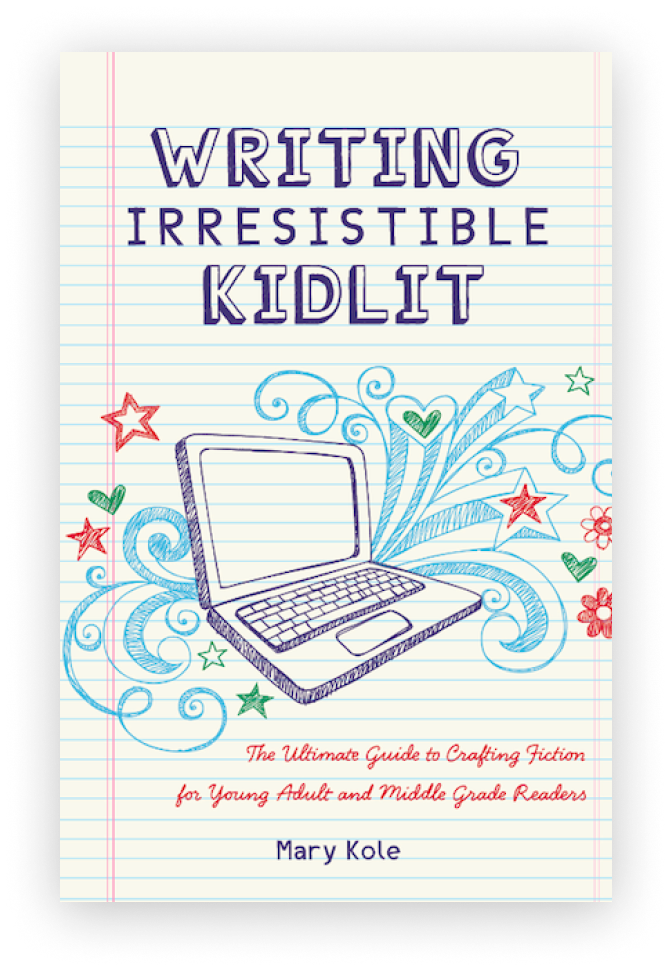Novel Writing:
A Step-by-Step Guide
By Mary Kole
Mary Kole is a former literary agent, freelance editor, writing teacher, author of Writing Irresistible Kidlit, and IP developer for major publishers, with over a decade in the publishing industry.
Novel writing is a lot of work, but the potential achievement and reward are worth giving it a try if fiction writing is your goal. Novel writing not only requires writing skill, but patience, dedication, and determination, which are emotional writer tools that don’t get as much traction as craft knowledge. If you want to craft something that can capture the attention of readers and keep them hooked until the very last page, don’t be daunted by the enormity of this task. Where do you start? How do you know if your premise has enough heft to sustain a full-length novel? How do you even go about drafting it? In this article, I’ll provide an overview of the novel writing process, from generating an idea to drafting to submission or self-publishing.
Novel Writing: Generating an Idea
The first step of novel writing is coming up with an idea or premise—one that has enough substance to sustain a full-length story. To come up with an idea for your novel, make sure it’s something that excites you and that you genuinely care about. Pick an idea that has a universal theme as well, or something you want to transmit to readers (but subtly, of course).
Brainstorm by jotting down any ideas you have. Don’t worry if they all seem unrelated at first, eventually they might fit together, especially once your brain is able to crunch on your novel ingredients. Then ask yourself what kind of message or insight into life you want to share with readers. Once you’ve narrowed down your ideas and figured out what kind of insight you want to communicate, then it’s time to move on to a book outline, where you will flesh out plot and character arcs. I strongly recommend outlining, so you work smarter, not harder. If you’ve already done all of the generative thinking, then drafting will be a breeze.
Novel Writing: Drafting Your Manuscript
The next step is drafting! This is one of the most difficult parts of writing a novel because it requires some real dedication. This is why a novel outline is helpful before you sit down to create your manuscript. So you’re not trying to figure out what the story is as you try to write it.
Figure out a regular writing practice that works for your schedule and won’t burn you out, then do your best to write your chapters and scenes with an eye toward action and proactive character. Novel writing should feel challenging, but also not impossible. Focus on the chapter in front of you and make sure each sentence flows well and contributes meaningfully to your plot and character development.
Remember that writing doesn’t have to be perfect the first time around—it can be edited later. So just let those creative juices flow and see what comes out in the creative ecstasy of novel writing.
Novel Writing: Revision
Once you’ve finished drafting, it’s time for self-editing. This is where many writers find themselves stuck. They don’t know what to attack so they pay attention at the sentence level first, and never progress beyond. But novel writing is about making big changes and doing significant revision. If you find yourself simply moving commas around, maybe it’s time to get a beta reader or critique group involved. They might give you some writing notes that will steer you toward the changes you need to make. (And don’t get me wrong, you are probably lovely and smart, but every novel manuscript needs revision. It will never be too early to get used to this idea.)
After a few rounds of revision, you might find yourself wondering whether your project is ready for submission or self-publishing. The answer is that it depends from writer to writer and from novel to novel. Some writers like going through multiple drafts before they feel comfortable submitting their work, while others are satisfied after fewer revisions—though these latter writers might send their book query letter too early. (I still insist you get several eyes on your project before you submit, and you don’t have to invest in a freelance editor to do it, though many writers do. Writing groups are a great alternative.) At some point, you will want to get your work out there, but making this judgment call is one of the toughest decisions in all of novel writing.
Novel Writing: Submission or Self-Publishing
The next step in the novel writing process is to pursue publication opportunities. This could involve finding a literary agent, submitting directly to publishers, or self-publishing. During this stage, you might get your first taste of book rejection—but don’t give up. Most aspiring writers will not get as far as you have in their novel writing endeavors. Successful novel writing and publishing requires resilience and persistence.
When considering the merits of traditional publishing versus self-publishing, you should be aware that their potential for success can vary depending on the genre and category. Keyword-specific topics tend to work well with self-publishing, as do certain genres like romance/erotica or mystery/thriller/suspense. If you’re up for writing to market, self-publishing may be a good option.
That said, it’s important to remember that not every project needs to go down the same path. You could start out with a traditional publishing house, then switch over to self-publishing. Or you could combine both models—self-publish one book while releasing another traditionally. Whether you’re looking for a long-term career or are just trying an experiment, understanding all of your options will help you make informed decisions about each project you attempt.
Novel writing can be daunting but also incredibly rewarding. If you take the time to intentionally generate an idea that excites you, dedicate yourself throughout the whole process of drafting and revision, and make informed publishing decisions, you could reach your writing and publishing goals and share your story with the world.

Click here to purchase Writing Irresistible Kidlit, my book on fiction craft for MG and YA novels, out from Writer's Digest Books. This will show you my writing craft philosophy and give you lots of valuable advice, including tips for the novel revision process and self-editing. There are over 35 example novels cited and discussed throughout. It’s a valuable resource for any writer’s toolkit.
Click here to purchase Irresistible Query Letters, my book on query letters, including over forty examples with comprehensive notes on each one. There’s a ton of submission advice, best practices, and insider information in these pages, and you’ll really enjoy seeing what other writers are doing in the slush.
Click here to purchase Writing Interiority: Crafting Irresistible Characters, my book on interiority and character creation. Explore your protagonist’s thoughts, feelings, reactions and interpretations, expectations, and inner struggles to create a rich, immersive experience. This guide will empower you to create characters who live and breathe on the page, fostering an unbreakable bond with your audience.





